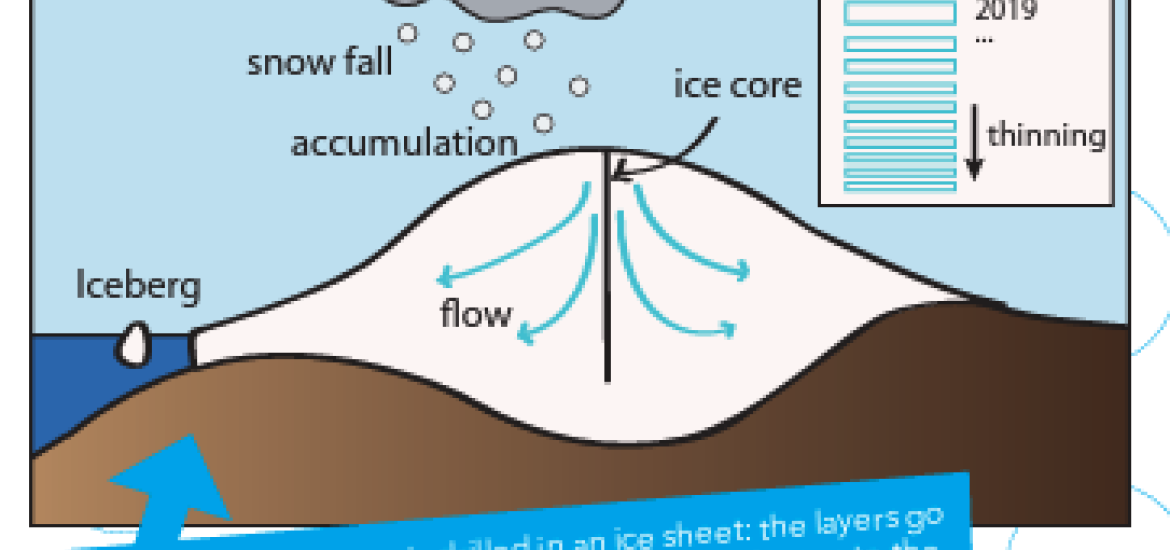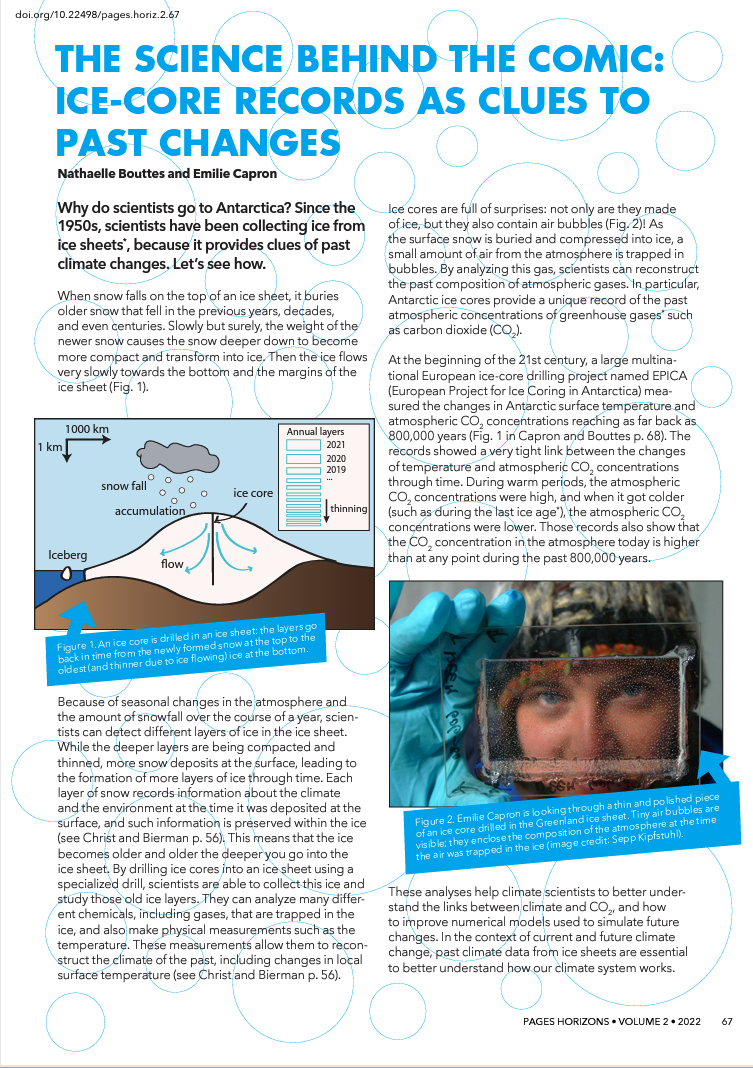- Home
- All News Overview
- Featured Article: Horizons Magazine (2) - The Science Behind The Comic: Ice-core Records As Clues To Past Changes

Tuesday, 10 January, 2023
By: Nathaelle Bouttes and Emilie Capron
Why do scientists go to Antarctica? Since the 1950s, scientists have been collecting ice from ice sheets*, because it provides clues of past climate changes. Let’s see how.
---
The deadline for Horizons contributions: volume 3 is on 31 January 2023. If you are interested in finding out more about getting involved in Past Global Changes Horizons - a popular science magazine aimed primarily at the younger generation, budding scientists, and all those enthusiasts both young and old who are interested in, or want to learn more about, the science of the past - you can find all details here.
---
When snow falls on the top of an ice sheet, it buries older snow that fell in the previous years, decades, and even centuries. Slowly but surely, the weight of the newer snow causes the snow deeper down to become more compact and transform into ice. Then the ice flows very slowly towards the bottom and the margins of the ice sheet (Fig. 1).
Because of seasonal changes in the atmosphere and the amount of snowfall over the course of a year, scientists can detect different layers of ice in the ice sheet. While the deeper layers are being compacted and thinned, more snow deposits at the surface, leading to the formation of more layers of ice through time. Each layer of snow records information about the climate and the environment at the time it was deposited at the surface, and such information is preserved within the ice (see Christ and Bierman p. 56). This means that the ice becomes older and older the deeper you go into the ice sheet. By drilling ice cores into an ice sheet using a specialized drill, scientists are able to collect this ice and study those old ice layers. They can analyze many different chemicals, including gases, that are trapped in the ice, and also make physical measurements such as the temperature. These measurements allow them to reconstruct the climate of the past, including changes in local surface temperature (see Christ and Bierman p. 56).
Ice cores are full of surprises: not only are they made of ice, but they also contain air bubbles (Fig. 2)! As the surface snow is buried and compressed into ice, a small amount of air from the atmosphere is trapped in bubbles. By analyzing this gas, scientists can reconstruct the past composition of atmospheric gases. In particular, Antarctic ice cores provide a unique record of the past atmospheric concentrations of greenhouse gases* such as carbon dioxide (CO2 ). At the beginning of the 21st century, a large multinational European ice-core drilling project named EPICA (European Project for Ice Coring in Antarctica) measured the changes in Antarctic surface temperature and atmospheric CO2 concentrations reaching as far back as 800,000 years (Fig. 1 in Capron and Bouttes p. 68). The records showed a very tight link between the changes of temperature and atmospheric CO2 concentrations through time. During warm periods, the atmospheric CO2 concentrations were high, and when it got colder (such as during the last ice age*), the atmospheric CO2 concentrations were lower. Those records also show that the CO2 concentration in the atmosphere today is higher than at any point during the past 800,000 years.
These analyses help climate scientists to better understand the links between climate and CO2 , and how to improve numerical models used to simulate future changes. In the context of current and future climate change, past climate data from ice sheets are essential to better understand how our climate system works.
> Access article
> Access Horizons volume 2 (2022)
> Access Horizons volume 1 (2021)
